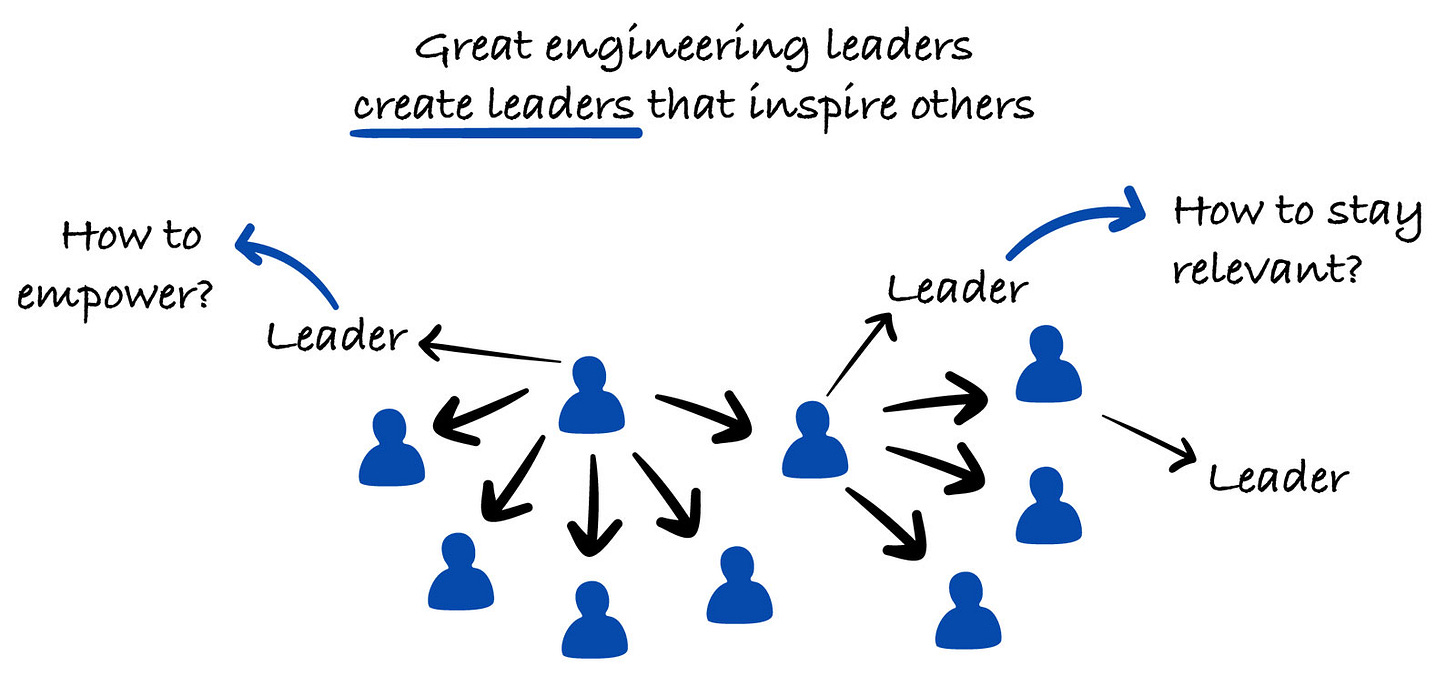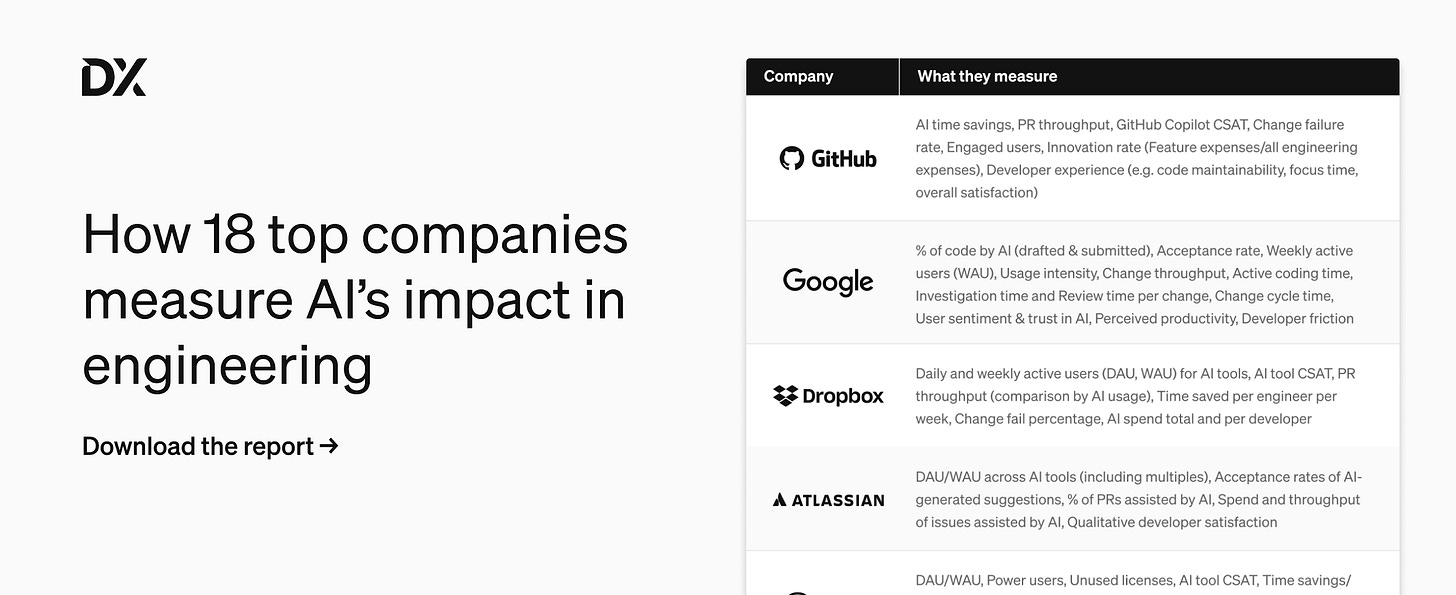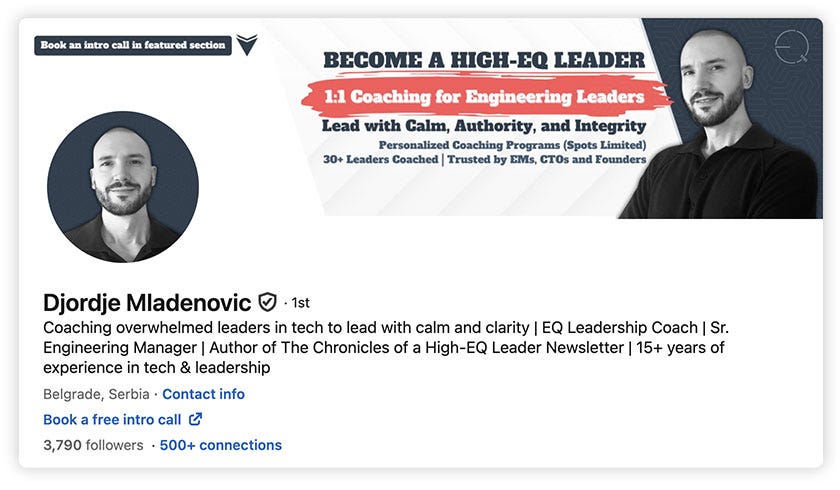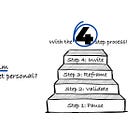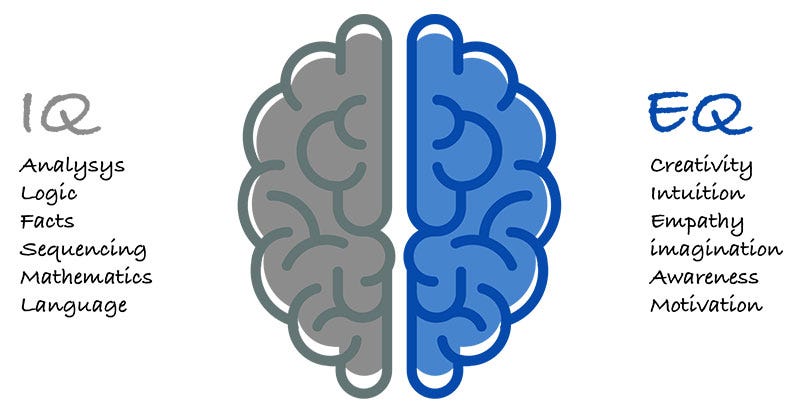How to Stay Relevant as an Engineering Leader While Empowering Others
Adjusting the way you empower based on 6 personality types is key!
This week’s newsletter is sponsored by DX.
How 18 Top Companies Measure AI’s Impact on Engineering
Written by Laura Tacho, CTO at DX, this new industry report explores how 18 engineering organizations—including Dropbox, Microsoft, GitHub, Atlassian, Adyen, Booking.com, and Grammarly—are measuring AI’s impact on software development.
Inside this report, you’ll learn:
Common patterns: Why most companies track speed, quality, and maintainability alongside AI usage.
Unique metrics: A deep dive on Microsoft’s “Bad Developer Days” and Glassdoor’s experimentation measures.
Practical guidance: How to get started with the AI Measurement Framework and guidance for collecting metrics.
Thanks to DX for sponsoring this newsletter, let’s get back to this week’s thought!
Intro
I’ve defined in the previous article called: This Is Holding Most Engineers Back from Lead Roles, that trusting and empowering others is one of the hardest mindset shifts engineers need to make in order to grow to lead roles.
FROM: How can I be the best in my craft?
TO: How can I help others to be the best at their craft?
And having a good balance is key here!
You can’t just completely let everything go, and you also shouldn’t be in all the fine details and risk being a micromanager.
Lucky for us, we have Djordje Mladenovic with us today. He is sharing how to find that balance in today’s article.
There are a lot of great details in this article, so it’s worth storing it and referring back to when needed, especially:
6 different personality types, how to identify individuals + how to empower and motivate people based on their personality type
4-step EQ Empowerment Framework that you can use
Real-world cases on how you can empower your people successfully based on their personality type
Introducing Djordje Mladenovic
Djordje Mladenovic is a leadership coach and Senior Engineering Manager with 15+ years in tech and over a decade leading teams.
He’s coached 30+ engineering leaders to grow their emotional intelligence, navigate tough leadership moments, and lead with confidence.
He is also an author of The Chronicles of a High-EQ Leader → a weekly newsletter filled with various frameworks and insights on EQ.
This is our second collab with Djordje, you can check the first one here:
Let’s get started!
Every Leader Should Be Creating Leaders
One of the biggest responsibilities of a leader is to create other leaders. We’re taught to give our people more ownership, trust them to make decisions, and help them grow.
But here’s the hidden paradox:
The more you empower your team, the less visible you can start to feel.
You might catch yourself thinking:
“If my team can operate without me, am I still adding value?”
“If I step back, how do I stay relevant to my company and leadership peers?”
“How do I give them space to shine without fading into the background myself?”
This tension is real, and it often pushes leaders into two unhelpful extremes:
1. Micromanaging to stay “in control”: You review every decision, insert yourself into every detail, and end up slowing your team down.
2. Disappearing to “let them lead”: You step back too far, thinking you’re empowering them, but risk becoming invisible or disconnected.
Neither extreme works.
The real challenge is finding the balance: how to empower others while staying relevant as a leader.
Because leadership isn’t about doing less. It’s about creating space for others to grow, while showing up where you add the most value.
The EQ Side of Empowerment
Empowering people isn’t just a leadership tactic → It’s an emotional shift that challenges how many of us define our value as leaders.
Most engineering leaders grow into leadership roles after years of being individual contributors.
Our careers are built on technical expertise, hands-on problem-solving, and personal delivery. Naturally, we learn to measure our worth by what we produce.
But when you step into leadership, that changes. Suddenly, your success is no longer tied to what you deliver personally → it’s tied to what your people deliver through you.
That transition sounds simple on paper, but feels deeply personal in practice. It can trigger a range of fears:
Fear of losing control: “If I don’t review everything, what if we make a mistake?”
Fear of becoming invisible: “If the team can operate without me, will anyone notice my contribution?”
Fear of losing identity: “I used to be the expert. If I’m no longer hands-on, who am I now?”
These fears are normal. They happen because empowerment challenges one of our core needs as leaders → the need to feel relevant.
Why Emotional Intelligence Matters
Empowerment isn’t just about delegating tasks. It’s about how you make people feel when you give them ownership. This is where emotional intelligence becomes critical:
1. Self-awareness
You need to understand your own triggers. Do you step in because the team truly needs support, or because it feels uncomfortable to let go?
2. Empathy
Not everyone experiences empowerment the same way. Some team members thrive on full autonomy, while others freeze without guidance. Treating them all the same doesn’t work.
Your relevance as a leader isn’t defined by how many tasks you control but by the trust you build. When people know you have their back, they seek your input naturally → you don’t have to fight to stay involved.
What Happens Without EQ
Leaders who struggle with emotional intelligence often fall into predictable patterns:
Micromanaging → hovering over every decision and unintentionally sending the message “I don’t trust you.”
Disappearing → stepping so far back that your team feels unsupported and disconnected.
Neither extreme works. The goal isn’t to do less or to do more → it’s to do the right things.
When you lead with EQ, empowerment becomes a partnership. Your people feel seen, trusted, and safe to take ownership, while you remain strategically involved where your leadership has the highest impact: setting direction, aligning priorities, and creating clarity.
This sets the stage for Process Communication Model (PCM), which takes emotional intelligence a step further by giving you a practical lens to understand what drives different personality types.
With PCM, empowerment stops being a one-size-fits-all concept and becomes personalized leadership.
Understanding PCM
One of the biggest mistakes leaders make when empowering others is assuming there’s a single right way to do it.
We often try to apply a “one-size-fits-all” approach: we give everyone the same level of autonomy, the same type of recognition, and the same kind of feedback.
But people aren’t the same.
What motivates one person might completely overwhelm another. What feels empowering to one personality type might actually create anxiety for someone else.
This is where the Process Communication Model (PCM) becomes incredibly powerful.
What PCM Is and Why It Matters
PCM is a framework originally developed by Dr. Taibi Kahler to better understand human behavior, communication styles, and intrinsic motivators. It identifies six personality types that exist in all of us to varying degrees. Each type has:
A preferred communication style
Core psychological needs
Distinct stress triggers
And what actually makes them feel empowered and trusted
As leaders, understanding these patterns gives us a huge advantage → it allows us to tailor empowerment to each individual instead of assuming everyone wants the same thing.
The Six PCM Personality Types
1. The Thinker
Motivator: Logic, structure, data
Thrives when: Given responsibility, clear instructions, and autonomy to plan
Empower them by: Trusting their analysis and letting them own solutions
2. The Persister
Motivator: Values, dedication, principles
Thrives when: Their opinions are respected and their commitment recognized
Empower them by: Giving them influence in decision-making and acknowledging their contributions
3. The Harmonizer
Motivator: Connection, trust, belonging
Thrives when: They feel safe and part of a supportive environment
Empower them by: Building relationships and showing personal appreciation
4. The Rebel
Motivator: Fun, creativity, spontaneity
Thrives when: They can experiment, innovate, and break routine
Empower them by: Giving them flexibility and room to propose unconventional solutions
5. The Imaginer
Motivator: Space, reflection, independence
Thrives when: They have time to think deeply without interruptions
Empower them by: Giving them time and autonomy, then checking in gently
6. The Promoter
Motivator: Action, challenge, results
Thrives when: They have big goals and authority to make decisions quickly
Empower them by: Giving them ownership of high-impact initiatives and trusting them to move fast
Why PCM Changes the Empowerment Game
Once you understand what drives each personality type, empowerment stops being random → it becomes intentional and personalized.
Some people feel empowered when you delegate responsibility.
Others feel empowered when you invite them into decisions.
And some feel empowered just by knowing you trust them without micromanaging.
PCM gives you the roadmap for tailoring your leadership approach based on how people are wired.
When you combine this with emotional intelligence, you unlock a much higher level of influence: you don’t just give autonomy, you give it in the way that motivates them most.
This is the foundation for our EQ Empowerment Framework → a practical, four-step process to empower people effectively without losing your own relevance as a leader.
The EQ Empowerment Framework
Empowering your team isn’t just about delegating tasks. It’s about building trust, matching autonomy to individual motivators, and staying strategically visible as a leader.
This four-step framework connects emotional intelligence with the Process Communication Model (PCM) → giving you a practical way to empower different personality types while maintaining your influence.
Step 1: Know the Person (Understand their PCM type)
Before you can empower effectively, you need to understand what drives each person:
A Thinker thrives on ownership of planning and logical problem-solving
A Rebel thrives on flexibility and creativity
A Persister thrives on influence and recognition of values
A Harmonizer thrives on connection and trust
An Imaginer thrives on space to reflect deeply
A Promoter thrives on action and fast decision-making
EQ Tip: Be curious before assuming. Ask, observe, and listen to understand where they shine and what energizes them.
Step 2: Match Your Empowerment Style (Tailor, don’t standardize)
Once you know their motivators, customize empowerment:
Thinkers → Give autonomy over system design and encourage independent solutions
Persisters → Involve them in decisions and ask for their input early
Harmonizers → Pair empowerment with personal recognition and consistent support
Rebels → Give space for experimentation and let them propose innovative approaches
Imaginers → Offer clear context, then step back and give them time to process
Promoters → Hand them high-impact, fast-moving initiatives and trust them to deliver
EQ Tip: Empowerment isn’t always about more autonomy. Sometimes it’s about giving the right kind of ownership.
Step 3: Stay Visible Without Taking Control (Strategic involvement)
Here’s where most leaders struggle: how do you empower others without fading into the background?
The answer isn’t micromanaging. It’s intentional visibility:
Be the person who aligns priorities and gives clarity, not the one who double-checks every detail
Set clear outcomes and agree on check-in points upfront
Use coaching conversations to unblock your people instead of solving problems for them
EQ Tip: Your relevance comes from creating direction and removing obstacles, not controlling tasks.
Step 4: Celebrate Wins Publicly (Amplify, don’t overshadow)
Recognition builds trust, motivates your team, and importantly, keeps you visible as a leader who creates other leaders.
Credit individuals by name in team or leadership forums
Share your team’s wins in cross-functional channels
Highlight your role as an enabler, not the hero
EQ Tip: When you position yourself as the leader who grows other leaders, your influence scales far beyond your direct contributions.
Why This Framework Works
It personalizes empowerment instead of using a one-size-fits-all approach
It keeps you strategically relevant while helping others grow
It builds a trust-driven environment where people want your input, instead of avoiding it
In the next section, we’ll bring this to life with real-world scenarios → showing how different PCM types respond to empowerment, where leaders go wrong, and how to fix it using emotional intelligence.



